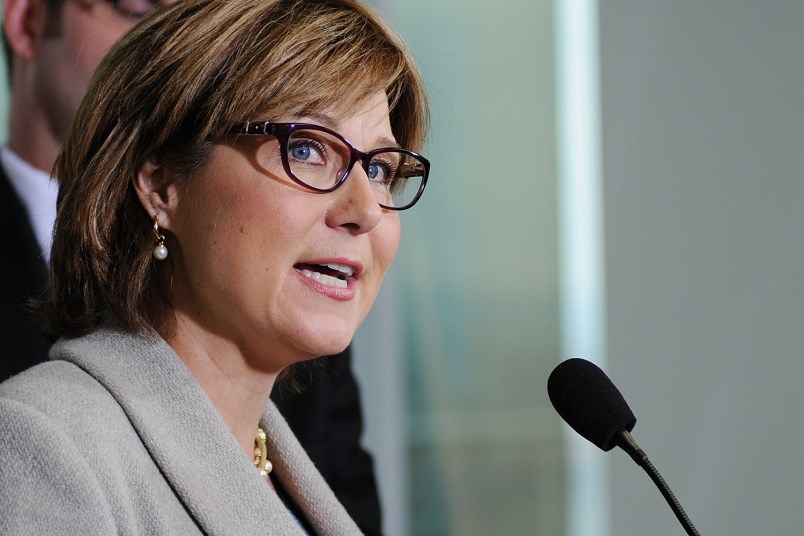A lot of entities and individuals operate on the assumption that the liquefied-natural-gas vision for B.C. is dormant or defunct.
But one of the remaining true believers happens to be the government of B.C. Its continuing enthusiasm for the dream, in the face of a price collapse that knocked the stuffing out of the underlying economics, is as strong as ever.
It was on full display last week at a signing ceremony that brought two First Nations on board the Petronas-sponsored Pacific Northwest LNG proposal near Prince Rupert. That project is the front-runner among the 20 in development, although the “race” has slowed to a crawl. It’s more accurate to say it got further along than most others before stalling out.
But even as it hangs fire, the government managed to portray some progress by signing benefit agreements with two First Nations that include some large numbers. The Lax Kw’alaams First Nation, which has been arguing environmental points over the key docking facility for the past few years, signed an agreement that appears very lucrative.
The government costs it out at $98.5 million. It includes $22 million from a trust contribution, $7 million of which will arrive the day PNW LNG announces a final investment decision. The rest is to be released once construction begins. The band would get an annual benefit of $590,000 and an ongoing share of production benefits once shipping begins, along with other benefits related to an associated pipeline to the plant.
There is also a $50-million spending commitment for roads and transportation infrastructure.
It’s all predicated on the PNW LNG plant proceeding as constituted, and the deal is applicable to others in that region in development. Also included is the transfer of various pieces of Crown land, some of it regardless of whether the project proceeds.
A similar separate deal was signed with another First Nation in the region, the Metlakatla. It’s worth $46 million, with $5 million payable from the government immediately, regardless of progress. Funds are earmarked for shellfish aquaculture and up to $17.5 million for a seniors’ care facility.
All of the cash cited is from the province, not the company.
They look like attractive deals from the First Nations’ perspective, mostly because there’s little downside, other than dashed hopes. If the project doesn’t happen, there is no direct cost, and a few benefits flow regardless. LNG Minister Rich Coleman said it was a historic deal, but it is basically just laying yet more groundwork for a project taking much longer than expected and still very much in doubt.
Under the original vision laid out to voters during the 2013 campaign, there would be three LNG plants up and running by 2020. B.C. would be long past the point of laying groundwork by now. Major construction would be well underway.
It was to have been part of the “trillion dollars of economic activity over the next 30 years” that was going to produce $200 billion in revenues to make for a “debt-free B.C.” and even eliminate the provincial sales tax.
But apart from volumes of design work and an assortment of conditional approvals, there is nothing, other than a commitment for a very small plant near Squamish, which was never part of the original vision.
Wan Badrul Hisham, the chief project officer for PNW LNG, was on hand to proclaim the deals were a “significant milestone.”
He is one of the key decision-makers on the fate of LNG. In an interview later, he said the first challenge is the change in the market and the need to cut project costs.
“It’s very challenging to commit in the current market. Even if project costs are lowered, we’ve seen LNG prices have dropped $5 to $7 … yet the feed gas, or the gas over here, has only dropped one or two dollars. So the margin between feed gas and LNG is now very narrow.”
“There are several things we are doing in terms of trying to reduce the costs of the project.”
There was a long list of benefits and lots of enthusiasm, but it’s all conditional.
Lax Kw’alaams Mayor (Chief) John Helin said the benefits would be huge, “should it go forward, or when it goes forward.”
That’s still the big question.



